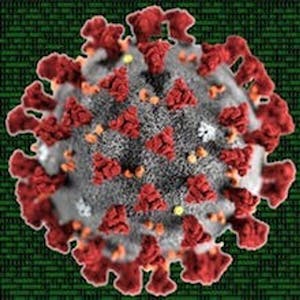Network and Communications Security
About this Course
Course 5: Network and Communications Security Welcome to course five: network and communication security. As we know, the explosive growth in networks, connectivity, and communications has paved the way for unprecedented transformation of business, personal, and government services into electronic, web enabled forms. This growth in e-business and e-commerce greatly expanded the threat surface. Fraudsters, criminals, unscrupulous business competitors, nation states, and non-nation state actors can take harmful actions against others worldwide. For decades, the world has operated on what is basically a network monoculture. One set of protocols and standards are used to power most of the internet, the worldwide, web e-commerce, and e-business. These standards include the open systems interconnection seven layer model from international organization for standardization and transmission. And the control protocol over internet protocol model from internet engineering taskforce. Almost every laptop, many smart devices, and other such end points use these standards to communicate with servers, and applications, and businesses, and governments. Therefore these models, or protocol stacks become our map of the threat surface. Security professionals need to have a solid understanding of modern networks and internet work concepts, techniques, technologies, and security issues. Their work is like police patrols, because they need to be familiar with the neighborhood\'s environment. Security professionals need to know the best ways to keep the neighborhood secure and to defend against attacks. The need for such a policing mentality is particularly urgent if the company has limited or no remote visibility into its operational technology systems. For this course, in module one, we start with a brief orientation to the network neighborhood, through the open systems interconnection seven layer, and transmission control protocol over internet protocol models. Then, we dive into all eight layers of this combined protocol stack. Introducing the key technologies at each layer and their regular use. In module two, we look at the various protocols that run on top of this architecture. In module three, we focus on attack and defensive strategies and tactics and build on the industry leading approach to put threat surface analysis into both the attackers and defenders operational context. In the last module, we bring these ideas together into a network security management and monitoring perspective. Now, let\'s discuss these four modules in detail. Course 5 Learning Objectives After completing this course, the participant will be able to: L5.1 - Recognize layers of the OSI model, their functions and attacks present at each layer. L5.2 - Identify commonly used ports and protocols. L5.3 - Select appropriate countermeasures for various network attacks. L5.4 - Summarize best practices for establishing a secure networked environment. Course Agenda Module 1: Apply the Fundamental Concepts of Networking (Domain 6 - Network and Communications Security) Module 2: Securing Ports and Protocols (Domain 6 - Network and Communications Security) Module 3: Network Attacks and Countermeasures (Domain 6 - Network and Communications Security) Module 4: Manage Network Security (Domain 6 - Network and Communications Security) Who Should Take This Course: Beginners Experience Required: No prior experience requiredCreated by: ISC2

Related Online Courses
Students start by learning about the HyperText Markup Language (HTML) and basic rules for creating compliant HTML. They learn tags for creating web pages and formatting text on the page including... more
My son is going to grow up in a completely different world that is filled with generative AI (e.g., ChatGPT, Claude, LLama, etc.). I think this is a world of possibility, creativity, and deep... more
This Innovation and Entrepreneurship course focuses on the interconnection between entrepreneurial thinking and innovation. Specifically, we look at models used in Silicon Valley to grow both... more
The 5 courses in this University of Michigan specialization introduce learners to data science through the python programming language. This skills-based specialization is intended for learners who... more
This Specialization is intended for anyone to learn practical applied Bioinformatics skills by studying real data from the COVID-19 pandemic. Whether you\'re new to the world of computational... more








